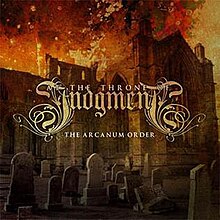HD 110458
HD 110458| 관측 데이터 Epoch J2000.0 이쿼녹스 J2000.0 | |
|---|---|
| 별자리 | 센타우루스 |
| 우측 상승 | 12h 42m 35.45s[1] |
| 탈위임 | −48° 48′ 47.2″[1] |
| 겉보기 크기 (V) | +4.66[2] |
| 특성. | |
| 스펙트럼형 | K0III[3][4] |
| U-B색지수 | +1.01 |
| B-V색지수 | +1.09 |
| 아스트로메트리 | |
| 방사 속도 (Rv) | -11.7±0.8km[2]/s |
| 고유 운동 (μ) | RA:−123.84±0.16[1]mas/yr Dec.:−30.17±0.13[1]mas/yr |
| 시차 (π) | 17.11 ± 0.22[1] 마스 |
| 거리 | 191 ± 2 리 (58.4 ± 0.8 pc) |
| 절대치수 (MV) | +0.99±0.028[5] |
| 세부 사항 | |
| 미사 | 1.71[6] M☉ |
| 반지름 | 11.61+0.23 −0.19[7] R☉ |
| 루미도 | 60.8±2.0[7] L☉ |
| 표면 중력 (log g) | 2.61[5] cgs |
| 온도 | 4,682±26[6] K |
| 금속성 [Fe/H] | 0.19[5] 덱스 |
| 나이 | 2.61[6] Gyr |
| 기타 지정 | |
| 데이터베이스 참조 | |
| 심바드 | 자료 |
HD 110458은 센타우루스 남쪽 별자리에 있는 단일[9] 별이다.그것은 Centauri와 Bayer라는 이름을 가지고 있고, HD 110458은 Henry Draper Catalogue의 별의 식별자다.이 별은 주황색 빛깔을 띠고 있으며 육안으로 희미하게 볼 수 있으며, 가시 크기는 +4.66이다.[2]시차를 기준으로 태양으로부터 약 191광년 거리에 위치하지만 방사상 속도 -12km/s로 더 가까이 표류하고 있다.[1][2]1972년 O. J. 에겐은 우주 운동에 기초하여 히아데스 그룹의 유력한 멤버로 이름을 올렸다.[10]
HD 110458의 별 분류는 K0이다.이것이 핵심에 있는 수소 공급을 소진시킨 고령의 거성임을 나타내는 III.[3][4]태양 질량의 1.7배인[6] 26억년으로[6] 추정되며 태양의 11.6배까지[7] 확대됐다.이 별은 4,682K의 유효 온도에서 확대된 광권으로부터 태양의 61배[7] 광도를 방출하고 있다.[6]
참조
- ^ a b c d e f Van Leeuwen, F. (2007), "Validation of the new Hipparcos reduction", Astronomy and Astrophysics, 474 (2): 653–664, arXiv:0708.1752, Bibcode:2007A&A...474..653V, doi:10.1051/0004-6361:20078357, S2CID 18759600.
- ^ a b c d Anderson, E.; Francis, Ch. (2012), "XHIP: An extended hipparcos compilation", Astronomy Letters, 38 (5): 331, arXiv:1108.4971, Bibcode:2012AstL...38..331A, doi:10.1134/S1063773712050015, S2CID 119257644.
- ^ a b Houk, N. (1978), Michigan catalogue of two-dimensional spectral types for the HD stars, vol. 2, Dept. of Astronomy, University of Michigan, Bibcode:1978mcts.book.....H.
- ^ a b Cohen, Martin; et al. (April 1999), "Spectral Irradiance Calibration in the Infrared. X. A Self-Consistent Radiometric All-Sky Network of Absolutely Calibrated Stellar Spectra", The Astronomical Journal, 117 (4): 1864–1889, Bibcode:1999AJ....117.1864C, doi:10.1086/300813.
- ^ a b c Park, Sunkyung; et al. (2013), "Wilson-Bappu Effect: Extended to Surface Gravity", The Astronomical Journal, 146 (4): 73, arXiv:1307.0592, Bibcode:2013AJ....146...73P, doi:10.1088/0004-6256/146/4/73, S2CID 119187733.
- ^ a b c d e f Luck, R. Earle (September 2015), "Abundances in the Local Region. I. G and K Giants", The Astronomical Journal, 150 (3): 23, arXiv:1507.01466, Bibcode:2015AJ....150...88L, doi:10.1088/0004-6256/150/3/88, S2CID 118505114, 88.
- ^ a b c d Brown, A. G. A.; et al. (Gaia collaboration) (August 2018). "Gaia Data Release 2: Summary of the contents and survey properties". Astronomy & Astrophysics. 616. A1. arXiv:1804.09365. Bibcode:2018A&A...616A...1G. doi:10.1051/0004-6361/201833051. 이 소스에 대한 가이아 DR2 기록 VizieR.
- ^ "HD 110458". SIMBAD. Centre de données astronomiques de Strasbourg. Retrieved 2021-01-28.
- ^ Eggleton, P. P.; Tokovinin, A. A. (September 2008), "A catalogue of multiplicity among bright stellar systems", Monthly Notices of the Royal Astronomical Society, 389 (2): 869–879, arXiv:0806.2878, Bibcode:2008MNRAS.389..869E, doi:10.1111/j.1365-2966.2008.13596.x, S2CID 14878976.
- ^ Eggen, O. J. (June 1972), "The red giants in the Hyades group", Publications of the Astronomical Society of the Pacific, 84: 406, Bibcode:1972PASP...84..406E, doi:10.1086/129303.


